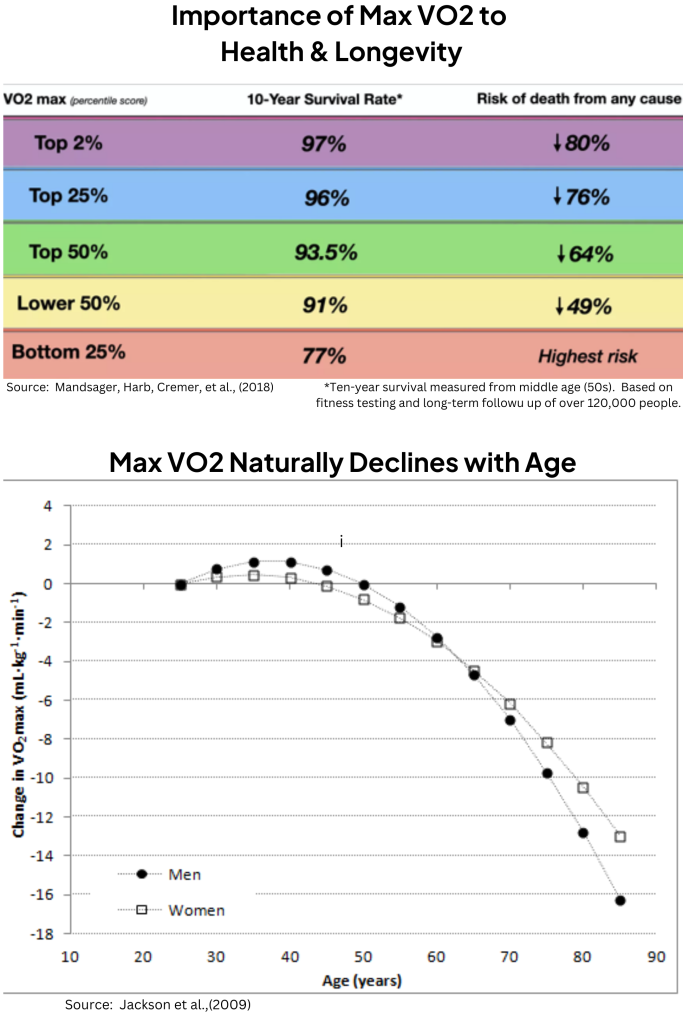What is a VO₂ Max Test?
VO₂ Max is a vital measure of both sports performance and overall health. Our test measures your maximum oxygen consumption during exercise, offering the gold-standard assessment of your cardiovascular fitness and aerobic capacity. At I-THRIVE, we provide accurate, lab-grade VO₂ Max tests using specialised equipment to give you precise results tailored to your fitness and health goals.
Why Take a VO₂ Max Test
VO₂ Max and Performance
- Higher VO₂ Max = Competitive Edge: Athletes with higher VO₂ Max levels can sustain greater intensities for longer durations.
- Endurance Efficiency: It determines how efficiently your body converts oxygen into energy, directly impacting stamina and output.
Who Should Take a VO₂ Max Test?
VO₂ Max testing is ideal for:
- Athletes: Optimise performance and tailor training for endurance sports including fuel utilisation planning for long-duration or high-intensity workouts
- Fitness Enthusiasts: Gain insights into your cardiovascular fitness and set measurable goals.
- Longevity Seekers: Monitor your VO₂ Max to maintain vitality as you age.
The Decline of VO₂ Max with Age
VO₂ Max naturally declines by around 1% per year after age 30. Left unchecked, this can result in a 30-40% reduction by age 70, with severe consequences:
- Reduced Cardiovascular Fitness: Everyday tasks become exhausting as oxygen delivery efficiency diminishes.
- Loss of Independence: Falling below a VO₂ Max of 15-18 mL/kg/min can make basic activities difficult.
- Increased Disease Risk: Lower VO₂ Max is linked to higher rates of cardiovascular disease, diabetes, and mortality.
- Decreased Longevity: VO₂ Max is a strong predictor of lifespan, with higher levels correlating to better health outcomes.

Test Protocol
Preparation
- Test Readiness Questionnaire: Prior to test day to assess suitability, define the test endpoint (max effort or anaerobic threshold), and choose between a treadmill or Wattbike.
- Avoid intense exercise 24-48 hours before the test.
- Equipment Setup: We’ll fit you with a mask to capture exhaled air and attach monitors to track your heart rate.
- Perform 5-10 minutes of low-intensity activity (e.g., walking, light cycling) to prepare for the test.
- Starting Point: Begin at a manageable intensity (walking, jogging, or cycling with low resistance).
- Incremental Increases:
- On the treadmill: Increase speed or incline every 1-3 minutes.
- On the Wattbike: Gradually increase resistance or cadence in stages.
- Continuous Monitoring: Track oxygen consumption (VO₂), carbon dioxide production (VCO₂), heart rate, and perceived exertion throughout.
- Submaximal Test (Anaerobic Threshold):
- The test stops when the anaerobic threshold (AT) is reached.
- AT represents the highest sustainable exercise intensity before fatigue impairs performance.
- Maximal Test: Continue to volitional exhaustion or physiological max effort.
- Perform 5-10 minutes of light activity to gradually reduce heart rate and blood pressure.
- VO₂ Max (or VO₂ at AT): Oxygen consumption at maximum or threshold effort.
- Heart Rate Zones: For targeted training and recovery.
- Fuel Utilization: Ratio of fat to carbohydrates burned at different intensities.
- Training Guidance: Optimal workout intensity and duration based on results.
FAQ
How long does a VO₂ Max Test take?
- The total appointment will be about 1 hour. The main exercise component of the test is typically 15-20 minutes in duration
How should I prepare for the test?
- For best results, avoid food, tobacco, alcohol, and caffeine for at least 3 hours before testing.
- Wear comfortable exercise clothing suitable for treadmill or bike exercise.
How often should I take a VO₂ Max test?
- It’s recommended to retest every 6-12 months or after significant changes in training, fitness level, or body composition.
Should I take the test on the treadmill or exercise bike?
- Choose the equipment that aligns with your primary sport or activity for the most relevant and actionable results. If unsure, contact us and we can help you decide.
- Treadmill: Best for runners, walkers, or weight-bearing activities; offers higher VO2 results but involves more joint impact.
- Exercise Bike: Ideal for cyclists, triathletes, or low-impact training; better for those with joint concerns or injuries.
Is the test suitable for beginners?
- We don’t recommend that beginners progress all the way to maximum exhaustion. Choosing the submaximal stopping point may be more appropriate for beginners. Alternatively, you could consider the FatMax test.
Can I do both a bike and treadmill VO₂ Max test if I am a triathlete?
- Yes, triathletes can benefit from doing both tests. A bike test provides cycling-specific data, while a treadmill test assesses running performance. Combining results helps tailor training zones and fuelling strategies for both disciplines, optimizing overall triathlon performance.
- We recommend waiting at least 48-72 hours between tests to allow adequate recovery, especially if performing at maximum effort. This ensures accurate results and avoids fatigue impacting your performance on the second test.
- What are the differences & similarities between Max VO2, FatMax, and Lactate Tests?
| Aspect | Lactate Threshold | FatMax | Max VO2 |
|---|---|---|---|
| Purpose | Identifies the intensity where lactate starts to accumulate faster than it can be cleared. | Determines the intensity where fat burning is maximised. | Measures the maximum oxygen your body can use during exercise. |
| Key Reasons for Test | Optimise endurance performance and delay fatigue. | Assess fat-burning efficiency. | Assess aerobic fitness and overall cardiovascular performance limits. |
| Primary Metric | Blood lactate levels vs. exercise intensity | Fat-to-carbohydrate fuel utilization ratio | VO2 (oxygen uptake) and VCO2 (CO2 output) |
| Outcome | Optimise training zones to delay fatigue and improve endurance. | Identify heart rate zones for fat loss and energy efficiency. | Assess aerobic capacity and overall cardiovascular fitness. |
- Each test provides valuable, specific insights, but combining them creates a holistic view of aerobic fitness, energy efficiency, and performance thresholds, allowing for highly targeted training and nutrition strategies.

